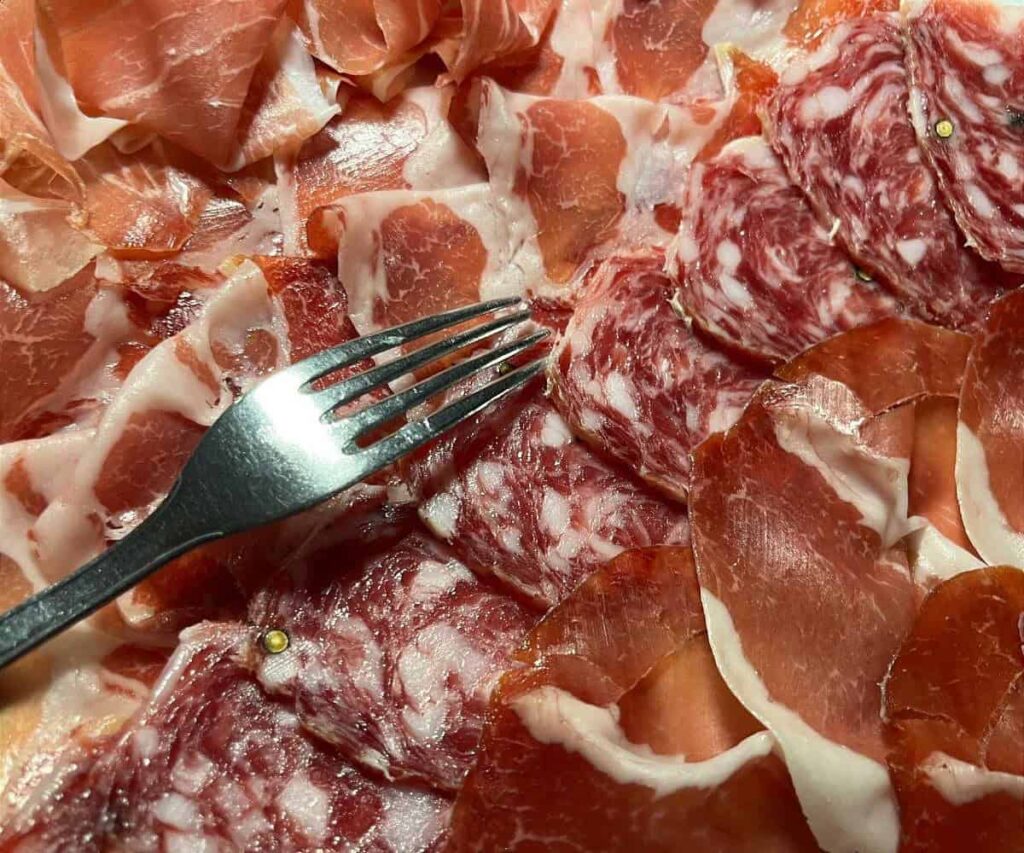Foodies talk of Emilia Romagna‘s produce with religious awe. Cathedrals of cheese. Heavenly wine cellars. God-given truffles.
Tastes that have endured for centuries, sometimes millennia: balsamic vinegar, prosciutto, parmigiana reggiano, lambrusco, pasta, tomatoes and truffles. A gourmet’s directory of 26 food museums, 24 DOC wines, plus numerous festivals of prosciutto, truffles and more.
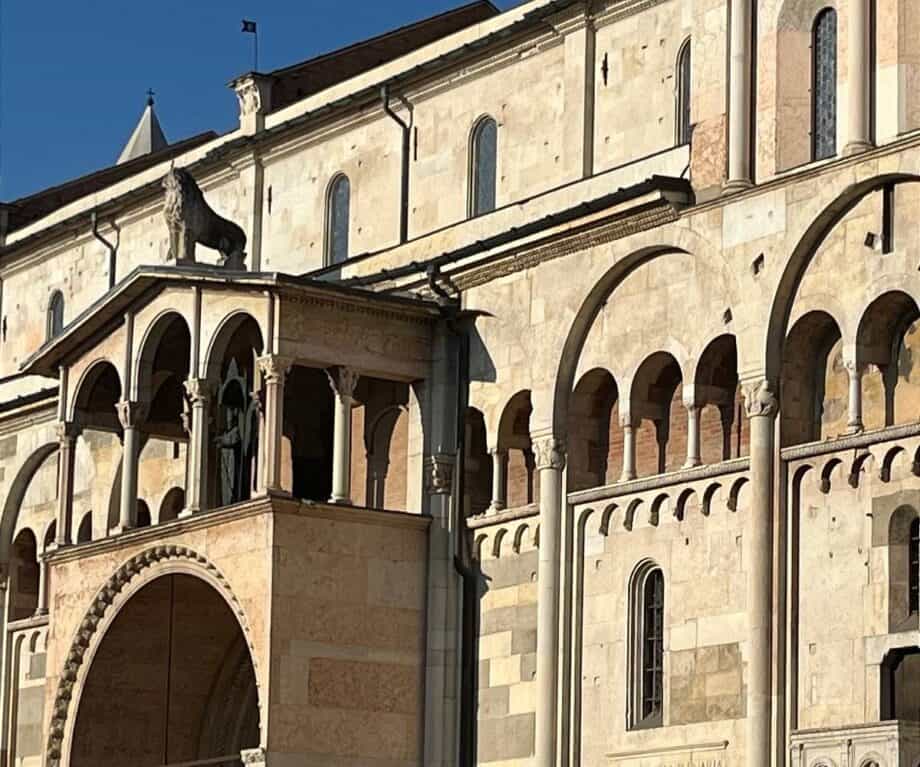
Throw in the dramatic architecture of Bologna, Modena and Parma, with an operatic soundtrack, and Emilia Romagna is a dream destination for the ultimate foodie road trip.
Balsamic vinegar
Drop the vinegar. They simply call it balsamic round these parts as it is a balm that soothes and restores: albeit at a price.
True balsamic, like a fine wine, has a protected origin, a DOC. If you’re putting a bottle of balsamic vinegar in your supermarket trolley, to serve as a salad dressing, it’s unlikely to be one of the region’s finest.
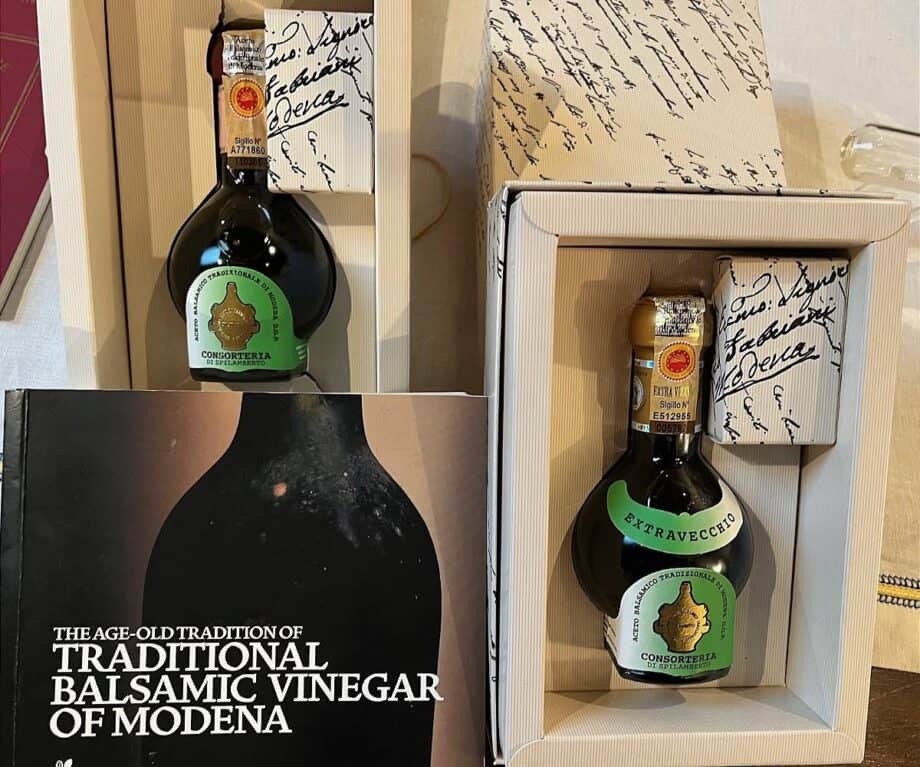
Balsamic creators claim that there is only one ingredient: grapes boiled for many an hour. That isn’t strictly true, they are being modest. When bottles are stored for 12 or 25 years, time and care are key ingredients too. Everyday the barrels are inspected and frequently turned.
Such vintages are not used as a salad dressing. Balsamic is dripped onto aged Parmigiana Reggiano as a starter. Drizzled onto strawberries, ice cream or panna cotta for dessert. For many, a drizzle of 12 year old balsamic over mature Parmigiana Reggiano is “La sua morte”, as good as it gets in this life, the perfect pairing.
In Modena, home of Ferrari, the style flows into the vinegar too: the iconic round bottles were created by a car designer back in 1987.
One long held tradition is to lay down a balsamic battery, a set of barrels, to celebrate the birth of a baby. As the child matures, so does the balsamic.
Prosciutto
In Emilia Romagna, cafe society talk often boasts of how their town has the best prosciutto.
Take a look at Modena Cathedral which leans away from its tower. Frescoes around one of the entrances, probably dating back to the 12th century, show a calendar of a peasant’s year.
As barren winter took hold in January, the diligent peasant should be carving a pig’s leg to produce cured prosciutto to see his family through the hungry winter months.
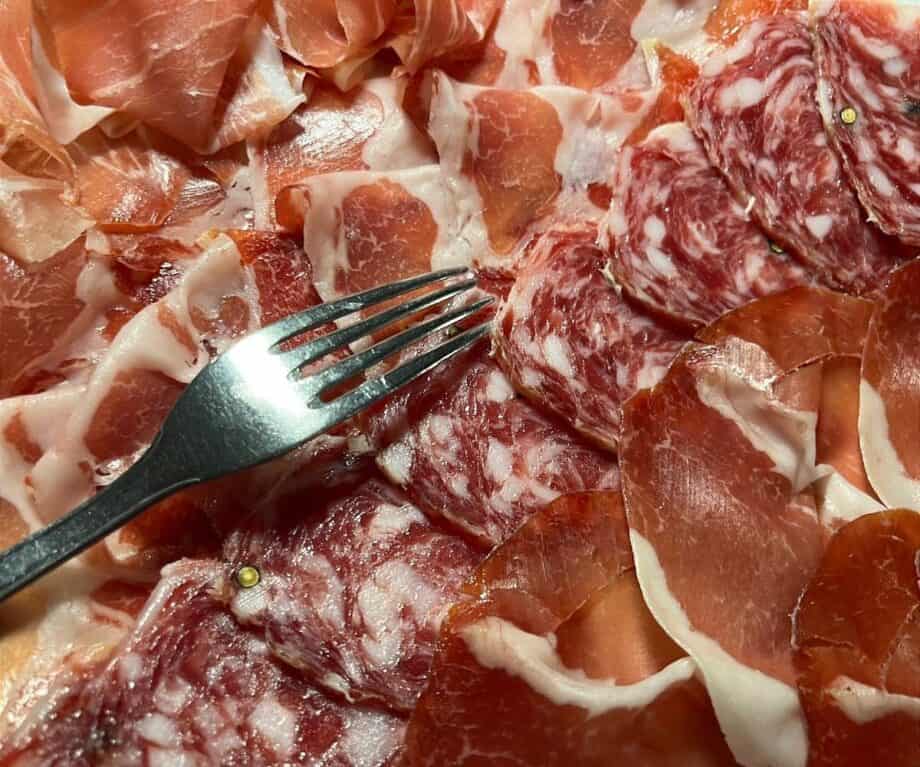
The mists of the River Po, the same fog that allegedly saved Modena from Atila the Hun’s rampaging hordes, contribute to the curing process. Food is history in Emilia Romagna: history is food.
Parmigiana Reggiani
In this region they don’t say cheese when it’s time to pose for a photograph they say, “Parmigiana Reggiano”.
Remember that you are on a “farm”. Never ever say “cheese factory.” Creating Parmigiana Reggiano, is a hands-on, artisan skill. Cheesemakers are like muscular midwives giving birth to two 50 kilogram wheels of cheese known as twin girls.
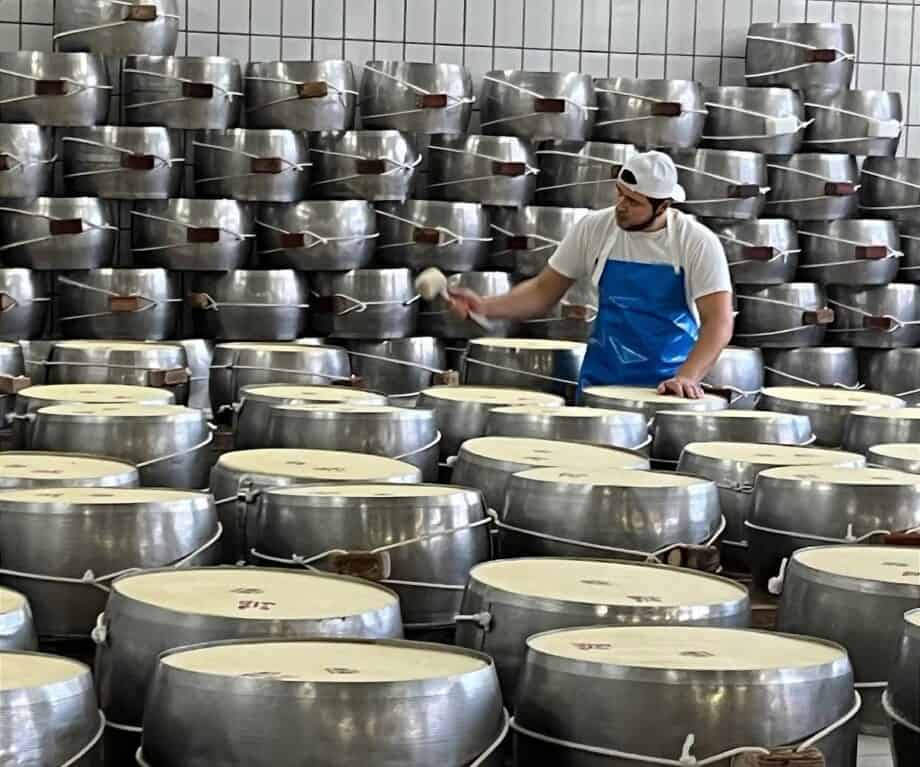
Originally, Benedictine monks aimed to create a long-lasting cheese. After soaking in brine, which takes nine months to seep through to the centre, the great wheels of cheese are stored in cheese cathedrals. Wheels are turned every week, ideally sweating away through two summers. In fact, there is a cathedral hush, as talking is not permitted amongst the cheeses in case it spreads infection.
Skilled inspectors gently tap the cheeses with a hammer, cheese orchestra percussion, to check there are no holes. Over two years, a cheese will slim down from 50kg to 40kg. As it ages, the structure changes, giving more crystals.
Young cheeses move-on to retailers whilst others progress to a cheese bank, often owned by banks, where they are kept as collateral against the farmers’ debts. More mature three and four year old cheeses are used for stuffing pastas such as tortellini.
Everything you need to plan your trip in 2024
Lambrusco
Forget memories of the cheap, sweet, fizzy pop that you drank at teenage parties.
Authentic Lambrusco, grapes originating from six different appellations within Emilia Romagna, is a drier, far more sophisticated wine.
“A nose of citrus and pomegranate. Sharp acidity. Impressive length. I’m biting through it for a fourth time,” says Filipino Bartolotto as he guides us through our first Lambrusco. “Even for professionals this is a wine that is difficult to spit,” explains the tasting master and wine journalist.
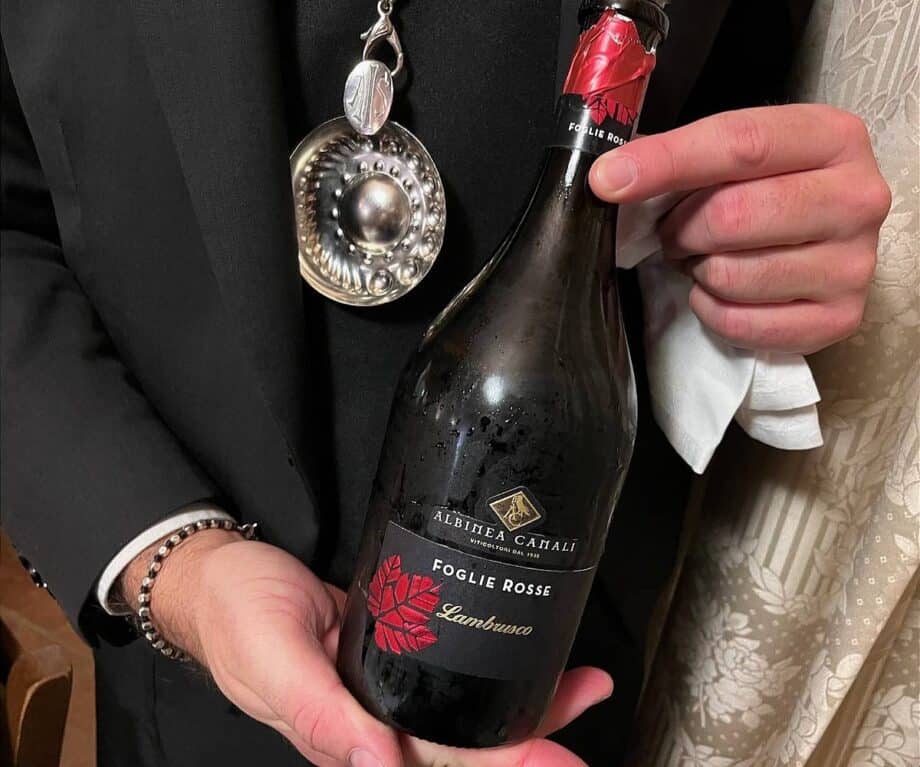
“Now we move to another world,” he says picking up a glass of Lambrusco red. “Prunes and shades of beetroot. An inky driven nose.”
Raising a glass to Lambrusco, “Chin-chin,” he exhorts. Before heretically recommending that some Lambrusco wines pair very well with … pizza.
Dynamic young winemakers are taking Lambrusco ever onward. As well as using SuFriGradi, the F1 Grand Prix term for a car accelerating to peak performance, the wine’s bottle is exactly the same height as a Ferrari F1 piston.
Barilla pasta
Early morning, as you walk through the grand arched porticoes of Modena, peep through restaurant windows to see women cajoling, nudging and shaping the day’s pasta.
For Barilla, pasta is art. They have employed Fellini and Lynch to bring art-house production values to their commercials.
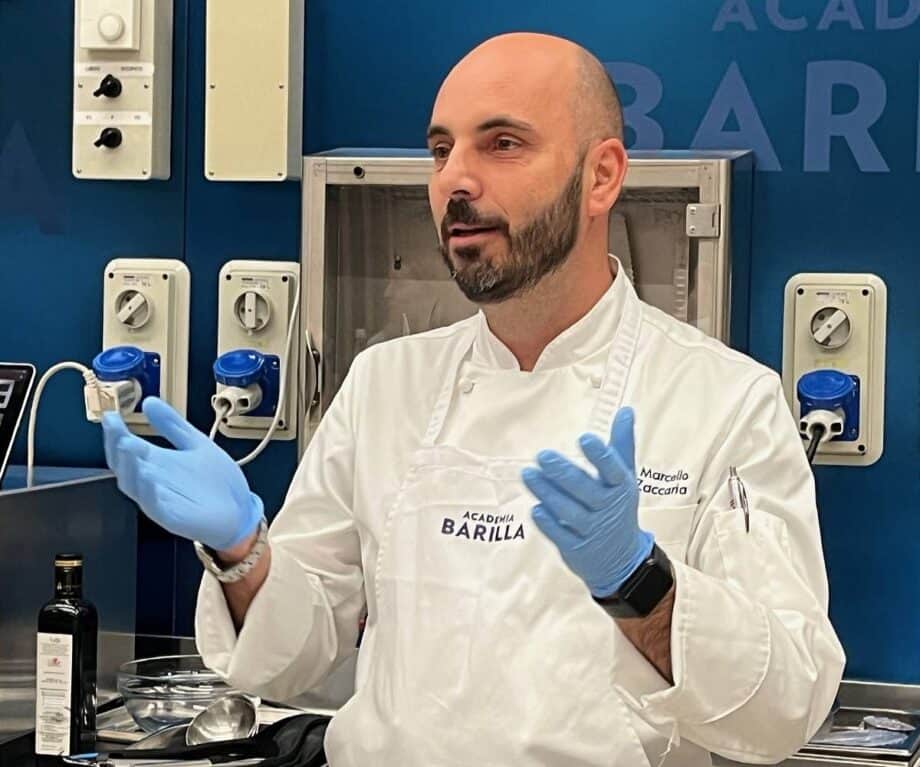
At the Academia Barilla, in Parma, chef Marcello prefers his pasta al dente, with a slight bite. He dismisses the Neopolitans who cook their pasta so briefly that it is crunchy whilst also disparaging the Milanese who go beyond al dente to soft.
In Parma, Barilla’s original shop is open to visitors to learn the history of Italy’s most famous pasta. Within walking distance is the Academia Barilla and its library of 26,000 food themed books and 5,000 menus: open to the public, by appointment, on Mondays.
Yet, Marcello thinks beyond the box, reinventing pasta. Overcooking fusilli for 25 minutes, chilling it in iced water, oven-drying at 50 centigrade and finally frying it for just three seconds creates a popcorn like snack.
Mutti tomatoes
Throughout the Po River region, 400 tomato growers aspire to the Golden Tomato awarded from
Mutti. Competition for the €7m paid annually in incentives encourages suppliers to produce the very best fruit for Mutti’s chopped tomatoes and tomato paste.
In 1899 the Mutti family decided to focus on tomatoes and now their latest project has been creating “A place to eat” canteen. Soon the tomato-resin floored, Carlo Ratti designed building, will open in the evenings as a restaurant overseen by the Famiglia Cerea: a renowned name guaranteeing serious quality.
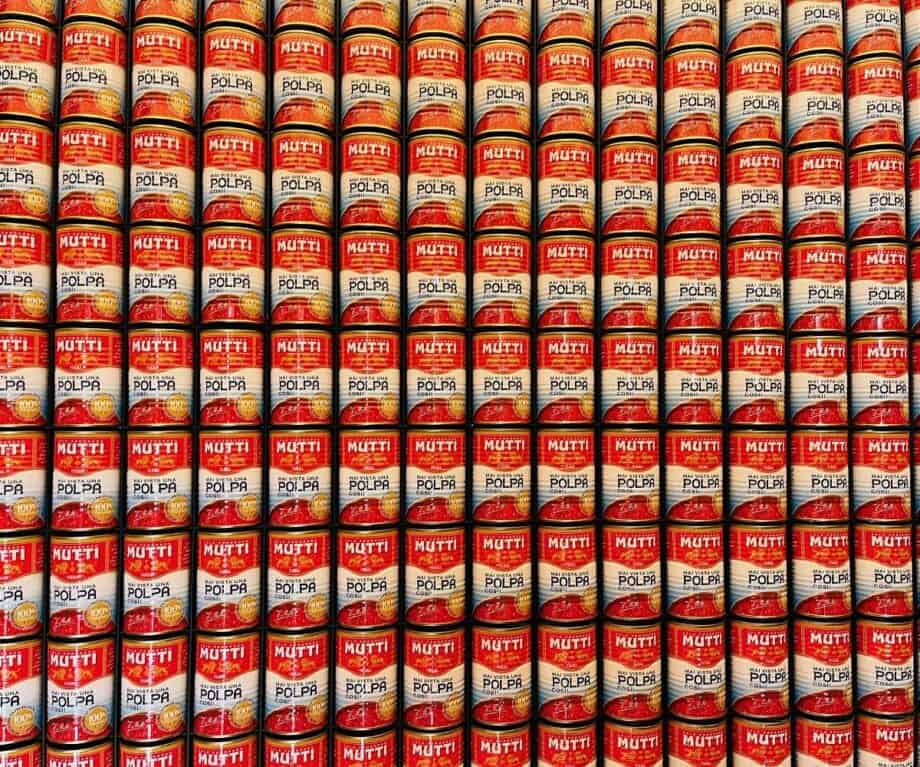
The entrance to the canteen, with echoes of Andy Warhol’s iconic work, is a wall of Mutti tins.
Truffles
There’s a mystique to truffle-hunting. Luigi Dattioli, now managing of Appennino Foods, searched for a year before his first truffle.
Even wellied truffle hunters with a lifetime’s experience can draw a blank as their Lagotta Romagnolo dogs sniff amongst the roots of poplar, oak, hazelnut and hornbeam trees.

Many truffle hunters prefer female Lagottas, as they are said to focus better than the males, keeping a treat of mortadella or prosciutto in their pocket to distract them from the truffles they discover.
In the hierarchy of the truffle world, white truffles are the most highly prized, fetching as much as €5,000 per kilo on a fluctuating market. Yet, very few hunters are able to make a living from truffles alone.
A culinary hotspot
The rich-soiled swathe of land, Emilia Romagna, slashing diagonally across Northern Italy from the Adriatic towards the Mediterranean puts the epic in epicurean. It is home to Bologna which many claim is the food capital of the world. Yet, it is Parma which UNESCO has designated a world gastronomic society.
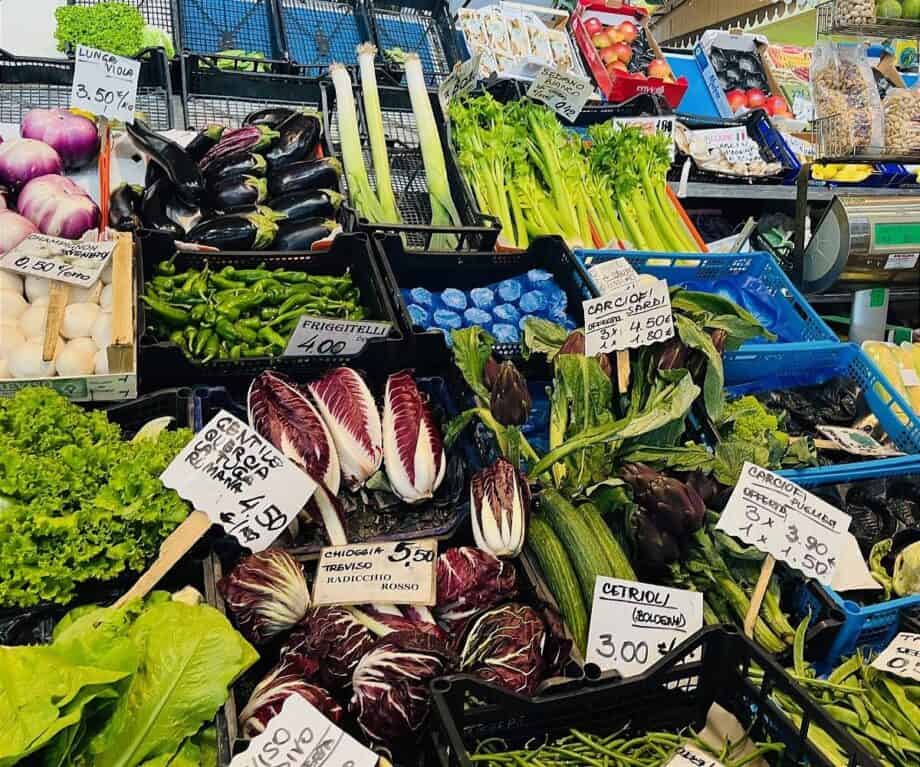
The ancient Via Emilia hosts a line of towns and cities, each with its own gastronomic heritage, creating Italy’s Food Valley. One of the planet’s culinary hotspots.
Disclosure: Our visit was sponsored by Emilia Romagna Tourism.
Did you enjoy this article?
Receive similar content direct to your inbox.
Please enable JavaScript in your browser to submit the form

